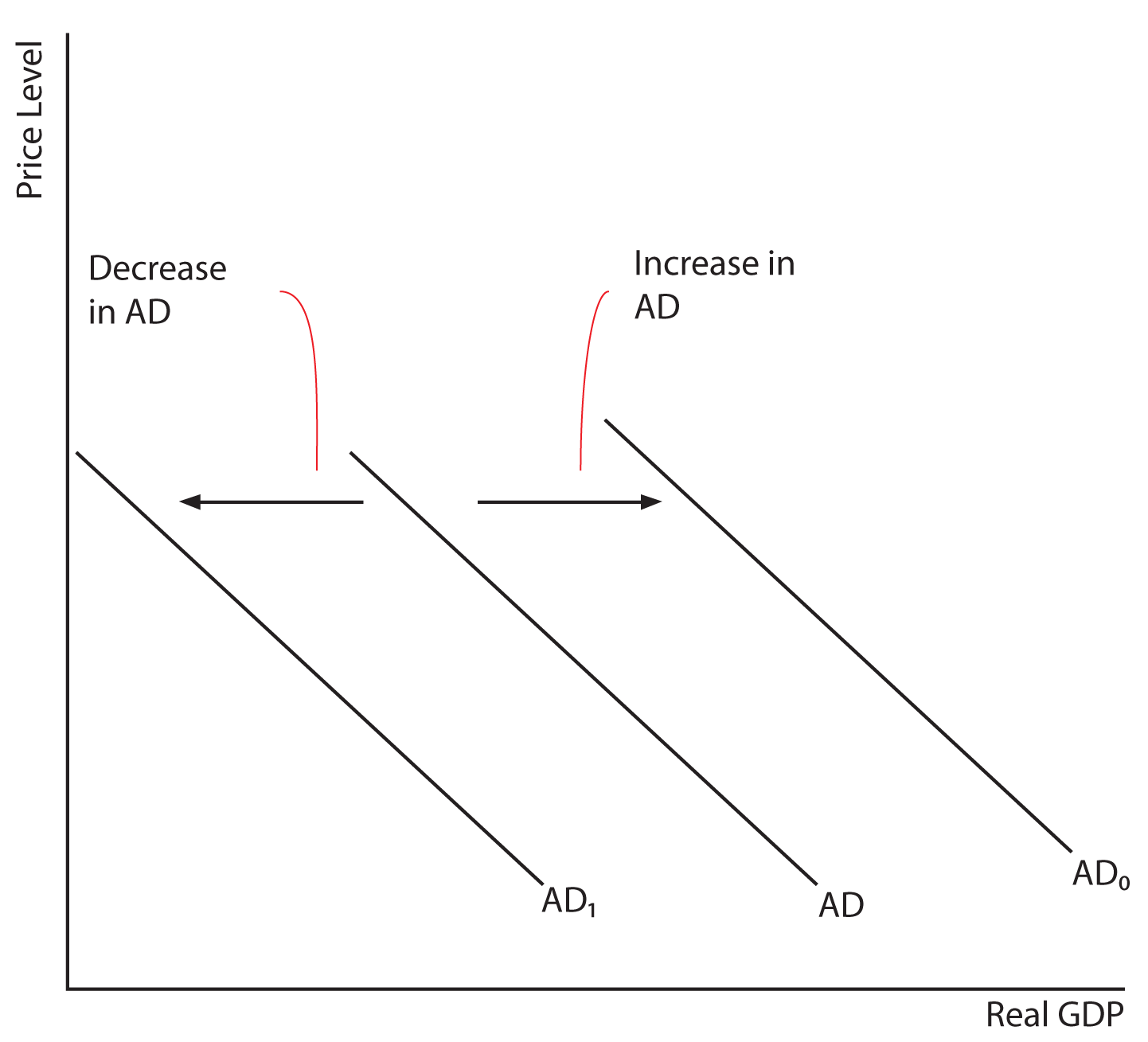| Demand Supply Curve |
Before I begin, I'm sure that you are aware of the Demand Supply Curve from a micro-economic front. The demand curve is sloping downards there too but for different reasons. For example, consider that the prices of pen suddenly fall, we can infer from the graph that the demand will rise because more and more people will now buy pens. Similarly the vice versa is true. If the prices of pens shoot up, people will try to substitute pens for something cheaper because the pens now cost a lot more and hence the demand goes down. The important thing to notice here is that the demand here is for a particular good or service. So this can be pens, ice creams, shoes and everything you can think of. Also the demand curve in a micro-economic scenario is affected by substitution.
Understanding the Aggregate Demand Curve
Now we see how the Aggregate Demand Curve is from a macro-economic front. In this case, we are talking about the economy as a whole and not individual commodities. Everything what an economy produces becomes the part of the the Aggregate Demand Curve. And by now, we already know that everything that an economy produces is nothing but the Real GDP which is denoted by Y=C+I+G+NX. So the horizontal axis (x-axis) denotes the Real GDP. Further in the mirco-economic front, the demand supply curve had the prices on the vertical axis. Even in the Aggregate Demand Curve, the price is on the vertical axis. Since this is the price of all the goods and services produced by and economy, I think this can by the CPI also since CPI talks about the prices of goods consumed.
Why Aggregate Demand Curve is downward sloping ?
Now that we had understood What Aggregate Demand Curve is, let's read about the reasons, Why the Aggregate Demand curve is downward sloping. Unlike the substitution effect seen in the micro-economics, the aggregate demand curve is not affected by this. So the reasons why the Aggregate Demand Supply curve is downward sloping are:
- The Wealth Effect: Consider that one morning you get up and realize that everything around you has become half the price that it was last night. You feel more 'wealthier' since you can buy more things with the same amount of money. Hence when people have more money in their wallets, they tend to spend more and hence the demand for goods and services increases. The Vice versa also holds true.
- The Interest Rate or Savings Effect: Continuing from the previous theory, when people will have more money, the prices will come down. And when the prices come down, people don't have to 'spend more' hence the 'savings increase'. With the increase in savings, the 'Interest Rates' go down. And when the interest rates are down, the rate of borrowing is also down. Hence the there is more investment thus 'increasing' the production of goods and services, increasing their demand. Thus when the prices go down, the demand for goods and services increase. Vice versa holds true too.
- The Foreign Exchange Effect: This deals with the exchange rate of a particular currency. Again continuing from the previous examples, when the prices go down, the interest rates also go down. When the interest rates are down, the investors will 'exchange the currency' to some other where they get 'more interest rate' When this happens, the home currency 'depreciates' and due to this, the prices of goods produced by the economy in the international markets 'reduce' Because the goods are cheaper in the international market, there is 'more demand' of goods and thus the demand for goods and services increases. Vice versa holds true too.
 |
| Aggregate Demand Curve |
So you saw the reasons why the Aggregate Demand Curve is downward sloping. Theories like the Wealth Effect, Interest Rate Effect and The Foreign Exchange Effect show why the Aggregate demand curve is downward sloping. Now let's see What factors affect the shifting of the Aggregate Demand Curve.
Factors affecting the shifting of Aggregate Demand Curve
From what we've learnt about GDP: Y=C+I+G+NX. The factors affect the shifting of the Aggregate Demand Curve including Consumption, Investment, Government Investment and Net Exports. Let's see how these factors affect the shifting of the aggregate Demand curve.
- Consumption: When people have more money maybe due to a reduction in taxes, they tend to spend more and hence the demand of goods increase. You can relate this to the Wealth Effect.
- Investment: When the interest rates go down, the investments increase thus increasing the production of goods and services. This increases the overall Real GDP.
- Government Investment: If the government plans to spend more money to build infrastructure, then the demand of goods and service increase and the aggregate demand curve shifts.
- Net Exports: This should be clear. If the demand of the home country goods increase in the international markets, the demand curve shall shift.
That's all about the Aggregate Demand Curve. I had a tough time understanding it initially in the class. But after spending sometime, I guess I've understood this well. And to ensure that I've understood this well, I've written this post on Understanding the Aggregate Demand Curve. I hope that you found this useful too. Mention your views / suggestion /corrections in the comments below.
Understanding the Aggregate Demand Curve
 Reviewed by The Executive
on
September 26, 2017
Rating:
Reviewed by The Executive
on
September 26, 2017
Rating:
 Reviewed by The Executive
on
September 26, 2017
Rating:
Reviewed by The Executive
on
September 26, 2017
Rating:

No comments: